A small white shoebox and the Battle of the Somme
Do you believe in coincidences and synchronicity? Or do you believe that strange forces are sometimes at work and might bring together events, people and stories in an unbelievable way that can’t only be mere chance? Are some things are just meant to be?…
I’ve written several local history books based around the towns and villages of the East of England. During my research into these books, I’ve often had strange coincidences which have led me to piecing together the jigsaw puzzles of my research. However, none have been more strange then my discovery and research into two incredible women, Clara Emily Mary Woolnough and Gertrude Unwin. These two young women from Suffolk volunteered as nurses with the British Red Cross and were sent to a large British military hospital to nurse the wounded of the Battles of the Somme during the First World War in 1916. (Note the plural “Battles” – there were many many battles and attacks which comprise the British Army’s participation in the fighting in the Somme region exactly one hundred years ago in 1916. Some still say “Battle of the Somme” whereas other call it “Battles of the Somme”).
Clara and Gertrude’s story is two of many such stories I have written about in my new book Postcards from the Front: 1914-1919. My book recounts the stories of men and women from Britain who served in the First World War through their eye-witness accounts detailed in their messages sent home.
The nurses’ story is so incredible that I was able to devote an entire chapter to them. I was able to use hospital War Diaries, the British Matron-in-Chief’s War Diary, and other contemporary resources, along with Clara’s own postcards she sent back to Britain, to tell the story of these two unsung heroines.

Postcards sent home by Clara during the Battles of the Somme. Her message “All leave stopped. Don’t expect me this year” was sent on a postcard to her mother during the Battles of the Somme

The Nurses’ Story: Part of the story of Clara and Gertrude, told through the eyes of Clara in her postcards home during the Battles of the Somme
*_*_*_*_*_*_*_*_*_*_*_*_*_*
What became so extraordinary was the strange sequence of events which led me to be able to tell their story. There was not room to detail the discovery of Clara’s postcards in my book, so please indulge me whilst I tell you on my blog about how I came into the possession of Clara’s postcards. And how Clara herself finally stepped out of the shadows.
At the tail-end of 2013, I was commissioned by Amberley Publishing to write a book called “Postcards from the Front: 1914-1919”. I always had the title, and I always had the rough content: the messages written on postcards sent from the battlefields of the First World War. My book idea (and title) was very loosely based on a blog-post I had written in 2012 about the postcards that a soldier from Leyton (East London) had sent home to his mother and father – Postcards from the Front: from your loving son. I thought, and fortunately Amberley Publishing agreed, that I could turn this type of story into a full-scale book which would interest readers.
There I had it. A complete book title. A rough idea based on one blog-post. But nothing else. Certainly not enough to fill a book.
After panicking for a few months, I decided I needed more material for my book. I already had a large postcard collection from the First World War in my own personal collection; but a quick glance through it told me that I really did not have enough to turn it into a coherent book. I started to sift through eBay to see if there was anything of interest on there. There was. But still not enough material to fill a book!
I started to pour over catalogues from various auction-houses who specialise in postcards, stamps, postal history and paper ephemera. I have often bought items from Lockdales in Ipswich and I turned to their catalogue. Just before the tail-end of 2013, I placed a bid on one of their lots which was described as “Small white shoebox housing a small bundle of WW1 Censor Marks on postcards” . That was it! No other description and certainly no pictures. A total shot in the dark on my part. I couldn’t even make it in person to the auction. It was a postal bid. Sold unseen!
To my utter surprise, I won my lot for the princely sum of £20. The auction-house had estimated that it was worth between £20-£25 – I had bid the absolute minimum price. There was no other bidders so my tiny bid of just £20 meant that this unseen shoe-box was now mine…
*_*_*_*_*_*_*_*_*_*_*_*_*_*
Once I received my box of postcards (which by now was about £27 by the time commission plus postage had been added on), I was totally underwhelmed. It was exactly as described. A box of postcards and envelopes which appeared to have been collected together because they had all been posted in France and so all had census marks/postmarks from, mainly, the First World War. It was a box of discarded and unwanted stock from an unknown postcard dealer.
It didn’t look at all interesting. I put the box away and forgot about it. And got on with my life.
*_*_*_*_*_*_*_*_*_*_*_*_*_*
Some months later, I knew I had to knuckle down and concentrate on my book and start working on it. By this time, I’d bought quite a few postcards from eBay – but I still didn’t know where my book was going. The endless blank pages and my deadline loomed ever large…
I got out my shoe-box of postcards and started to sort them. Over the span of an entire weekend, I sorted them all on my living-room floor into piles of postcards, with each pile consisting of all the postcards sent to one address. I had about 10 to 15 piles of postcards – some were single-postcard piles; others were 10-20 postcard high. It would appear that within that job-lot were several collections from several different people; all from the Western Front.
Two piles puzzled me considerably. The handwriting appeared to be different and the signature/name was different on each pile of postcards. But on the front of the majority of the postcards were pretty pictures of the same French village, and many postcards in both piles had messages referring to someone called “Unwin”. I then had the first (of many) eureka moments, and I realised that the sender was the same person on each pile of postcards, but with a different signature/name. This person was writing to a woman in Levington (Suffolk) and another woman in Plumstead (London). The language in all the postcards was strange; slightly personal and, as such, implied a close personal relationship to both women. For a few wild moments, I thought I was reading the postcards of a soldier with two sweethearts! But then it dawned on me that I was reading the postcards from a female writer; the personal language I’d detected in the messages was that of a woman.
I also realised that there were many postcards missing from the collection. My unknown writer had obviously been a prolific sender of postcards. But there were large gaps of weeks and months in the collection. I can only assume that when the collection was in the unknown postcard dealer’s hands, s/he had sold some of the postcards which had more interesting pictures.
A couple of the postcards had the text “No 6” and “25th General”. Another postcard had the abbreviation “N.S.” in the text of its message. The penny dropped. I was looking at the postcards from a female nurse.

This is the postcard that made me realise that I was reading the postcards from a female nurse in France
I now knew that I had a collection of 21 postcards sent by a female nurse working in France. A quick google on the “25th General” quickly led me to a British military hospital which was based in Hardelot, Pas des Calais. This was the same town whose pretty street and seaside photographs were on the majority of the postcards. I had found “my” nurse’s hospital. From the dates on the postcards, I also knew that this nurse was probably nursing casualties from the Battles of the Somme.

Afternoon tea at Hardelot. On the back of this postcard, “my” nurse had written on 22 June 1916 that she had afternoon tea here. This was just mere days before the opening infantry attack of the Battles of the Somme
But where to go from here? An unnamed nurse. Qualified nurse? Unqualified nurse? British?
*_*_*_*_*_*_*_*_*_*_*_*_*_*
I started to go through census returns and other records on Findmypast for the two recipients of the postcards – an Evie Cripps of Plumstead and a Peg Woolnough of Levington. I quickly found both women and as able to establish that Evie had a connection to Levington as it would appear that her mother had been born in this tiny Suffolk village. Better still, Evie herself had very kindly and thoughtfully (for my research purposes) been staying with her Grandmother in Levington’s almshouses for the 1911 census. Also in the almshouses was Peg Woolnough’s grandmother. So there was my connection between the two recipients. But who was the sender?
*_*_*_*_*_*_*_*_*_*_*_*_*_*
Exactly a year ago, I posted a question on the Great War Forum originally requesting information about Number 25 General Hospital. As the thread progressed, I quickly started to exchange messages with First World War nursing expert, Sue Light of Scarlet Finders. To my absolute shock, within minutes she and I had managed to identify the sender of “my” postcards. The sender was Clara Emily Mary Woolnough. A mixture of her unusual combination of Christian names, along with her equally rare surname meant that there was absolutely no doubt what so ever that I had in my hands the postcards from British Red Cross Voluntary Aid Detachment (VAD) nurse Clara Emily Mary Woolnough from Levington Suffolk!
It was a total eureka moment. I now had a name. I also had the name of her hospital and also the hunch that she was nursing the injured from the Battles of the Somme. I had gone from a “small white shoebox” with a dozen of so of her anonymous postcards to finally knowing her name.
*_*_*_*_*_*_*_*_*_*_*_*_*_*
My next stop was Kew and The National Archives to consult the War Diaries of Number 25 General Hospital. Last year, these diaries were not online and could only be consulted at Kew; they were only placed online earlier this year. So I had an enjoyable day out at Kew, spent researching hard, but also meeting up with my fellow historians from my Open University days and eating cake with them. Who said research has to be boring and relentless!
I had been warned by Sue Light that I was unlikely to find “my” VAD explicitly named in the War Diaries and that I might find very little detail. However, what I did find thrilled me. Clara was not named anywhere, but the Colonel in charge of the hospital had written extensive entries about the running of his hospital. The entries were incredibly detailed and, as I read them, it became increasingly obvious that the hospital was taking vast numbers of casualties from the Battles of the Somme.
I knew I finally had the start of my book. And Clara and Gertrude’s story could be a chapter in it. I started writing my chapter. Unfortunately at this time, both women’s service records were not online on the website of the British Red Cross. I had to piece together their story from a mixture of Clara’s postcards and the hospital’s War Diaries. I thought I had a reasonable and interesting chapter…
How wrong was I!
*_*_*_*_*_*_*_*_*_*_*_*_*_*
In June of last year, I was in the area of Levington and was at a loose end. I decided to pay a visit to Clara’s village of Levington. I visited with my husband on a gloriously hot summer’s day and we pottered around her village and, of course, had a lovely lunch in the local pub. The hot summer’s day, set in a beautiful quintessential English village overlooking the River Orwell, was in stark contrast to the horrific war I had been reading about in the war diaries of Number 25 General Hospital. Clara, a country girl, had left this rural beauty of Suffolk, to nurse seriously injured men in a war zone

The River Orwell from the churchyard of Levington’s parish church. The contrast between this beautiful idyllic scene and the horrors of a military hospital in France was staggering.
I took many photographs, and saw the name of Clara’s brother, George, on the village’s War Memorial.
I also went into the Church to take some more photographs where I found, to my great surprise, a beautiful stained glass window commemorating Clara’s family.

Stained glass window in Levington parish church commemorating the Woolnough family. George was killed in action in April 1917 during the Battle of Arras. Alan died in childhood.
On my way out, almost as a last minute thought, I decided to write in the Church’s Visitors’ Book. I wrote a fairly cryptic and short comment about Clara Woolnough being a VAD and left the church…
Unknown to me, Clara’s great-great nephew also visited the church at roughly the same time as me, in his search for his great-grandfather, George…
*_*_*_*_*_*_*_*_*_*_*_*_*_*
Are you still with me? No-one ever said that historical research is easy or quick! Same for this blog post! But the story of Clara and her postcards just has to be recounted in full.
*_*_*_*_*_*_*_*_*_*_*_*_*_*
About six weeks after I visited the church, I received an email from Levington’s Village Recorder, Louise. She had seen my cryptic comment in the church’s visitor’s book and tracked me down using some remarkable detective work on the internet (which just goes to prove that no-one has anonymity and everyone leaves a foot-print on the internet!)
We arranged to meet-up in Levington, although the meeting didn’t take place until a very wet, wild and windy November morning. We met in the local pub (where else!). And during the course of a very interesting morning, I learnt about the Woolnoughs of Levington.
The family had been the village’s postmaster/postmistresses since the 1840s and Peg Levington (who Clara’s postcards were sent to) carried on the family tradition and was the postmistress throughout the first half of the twentieth century. Louise indicated to me that George’s descendants had been in touch with her (I now know that Clara’s great-great nephew had visited the church just weeks after I did and on seeing my comment in the visitor’s book, decided to write his comment underneath!). Louise passed my details on to them.
All I could do was sit and wait for their email…. Although, at this stage, I still thought I had completed my chapter on Clara, and the rest of my book was slowly rolling into place…
*_*_*_*_*_*_*_*_*_*_*_*_*_*
Still with me?
*_*_*_*_*_*_*_*_*_*_*_*_*_*
In November, Clara’s great-great niece, contacted me. A flurry of extremely excited emails passed backwards and forwards between us. Her family, the Eversons, also had more postcards from/to Clara including a postcard to Clara from “Dick” and a postcard of a soldier in a uniform. The family and Louise had already worked out that the soldier in the picture was wearing the cap badge of the Machine Gun Corp – which George Woolnough had not served in. But, by this time I had researched Evie Cripps family and discovered that her brother Richard (also known as Dick) had been in the Machine Gun Corp at the time he was killed in action in 1916. Everything fitted that this was a photograph of Richard.
It was incredible to all of us, that this unnamed soldier in the Everson family’s collection had finally been given a name. Between us all, we had brought life back to a young man who had been killed in action a hundred years ago in 1916. He is not forgotten.

Richard Henry Cripps of Plumstead. For nearly a hundred years this photograph was of an unnamed soldier. Now he has a name and is no-longer forgotten. (Photograph courtesy of the Everson family)
The Everson also had in their possession a postcard from Richard “Dick” Cripps to Clara where he had cheekily asked if her fellow nurses looked like the nurse on the postcard.

Postcard sent to Clara Woolnough by Dick Cripps in 1915. He cheekily asked her “Are any of your comrades like this? With black hair?” (Photograph courtesy of the Everson family).
Things were slowly starting to slot into place.
Clara was stepping more and more out of the shadows.
The Everson family also had her war service record from the British Red Cross; which they had requested back in the early 2000s. Up to this stage, I had been unable to gain access to her service record as her surname was at the end of the alphabet and the British Red Cross Society were slowly putting records online in alphabetical order.
Having her service records from the Everson family was another eureka moment because I could now piece together even more of her story and also had some more postcards – including the photograph of Richard Cripps to interweave with my story.
But still no photograph of Clara. The family didn’t have any photographs of her or her brother, George.
I rewrote my chapter and thought that was it.
Wrong!
*_*_*_*_*_*_*_*_*_*_*_*_*_*
Shortly after New Year, I was in the final stages of my book and everything was practically ready to go off to the publisher. I received another email from the Everson family. This email nearly made me fall off my chair in absolute jaw-dropping amazement at the attachments. The Everson family had found a photograph of Clara nursing at her hospital in Ipswich during the Christmas of 1915!!!
The Eversons didn’t realise at first that it was Clara, but her writing on the back – demonstrating that this was a Christmas card sent to her mother back in Levington – absolutely shows beyond reasonable doubt that Clara herself was in the photograph.

Clara Woolnough’s postcard home to her mother. It was sent to her mother on Christmas Eve 1915 and proves that she herself was in the photograph.
Here she is, VAD Clara Emily Mary Woolnough, when she was nursing at a tiny 40 bed hospital in Ipswich just months before she was sent to France and the Battles of the Somme.

Clara, whilst she was nursing at Broadwater Auxiliary Hospital in Ipswich in 1915. She is one of the 3 young nurses standing up towards the left of the postcard. (Photograph courtesy of the Everson family)
I wrote my chapter once again and at last, could tell the full story of one of the many unsung heroines of the Battles of the Somme who had nursed wounded men throughout the battles; Clara Emily Mary Woolnough. Known as “Babs” to her family in Levington, and “Darl” to her best friend in Plumstead; Clara had finally stepped out of the shadows..
*_*_*_*_*_*_*_*_*_*_*_*_*_*
This time a year ago, I was sat at my desk, staring at “my” postcards saying to them – “Who are you”. This time this year, the story of a brave VAD who looked after men wounded during the Battles of the Somme can finally be told.
Do you believe that strange forces are sometimes at work and might bring together events, people and stories in an unbelievable way that can’t only be mere chance? I do.
Lest we forget
Postscript 1: May 2016
On Saturday 28 May 2016, almost exactly a hundred years since Clara sent her first postcard home to her family in Levington in early June 1916, I will be meeting the Everson family in the village of Levington to give them a copy of my book with the story of their courageous aunt, Clara Emily Mary Woolnough and her nursing friend Gertrude Unwin.
Postscript 2: January 2017.
Sadly First World War nursing expert, Sue Light, passed away in July 2016. I will always be grateful to her for helping me to identify my postcards from Clara Woolnough. Thank you, Sue, RIP.
My dad, John Cole, who my book is dedicated to, also died last year – he died on 25 August 2016. He was very ill in the final year of his life and confined to bed in a nursing home. Despite his increasing frailty, he spent a great deal of my visits to him discussing the First World War and the postcards I was using in my books. Without him, my book (and my love for vintage postcards) would never have happened. Rest easy dad.
You may also be interested in
– Great Dunmow’s Military Funeral: A follow-up
– War and Remembrance: It’s a long way to Tipperary
– War and Remembrance: Great Dunmow’s Emergency Committee
– War and Remembrance: Great Dunmow’s Military Funeral 1914
– Postcard home from the front – The Camera never lies
– Postcards from the Front – from your loving son
– Memorial Tablet – I died in hell
– Memorial Tablet – I died of starvation
– Memorial Tablet – I died of wounds
– The Willett family of Great Dunmow
– Postcard from the Front – To my dear wife and sonny
– War and Remembrance – The Making of a War Memorial
– Great Dunmow’s Roll of Honour
– For the Fallan
– Aftermath
© Essex Voices Past 2012-2016.














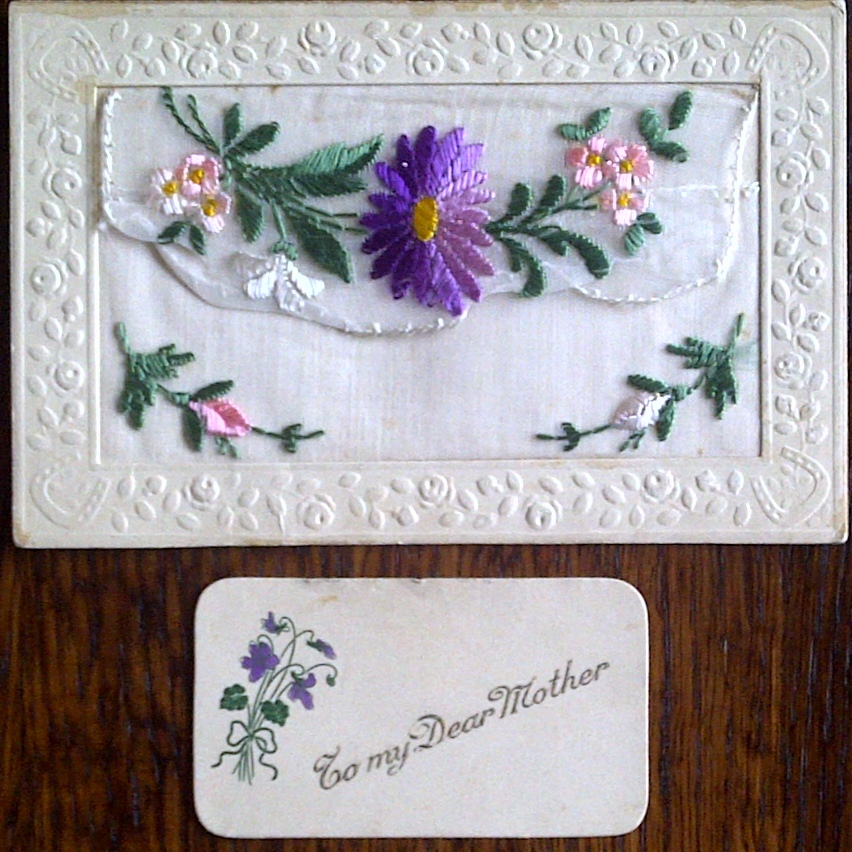
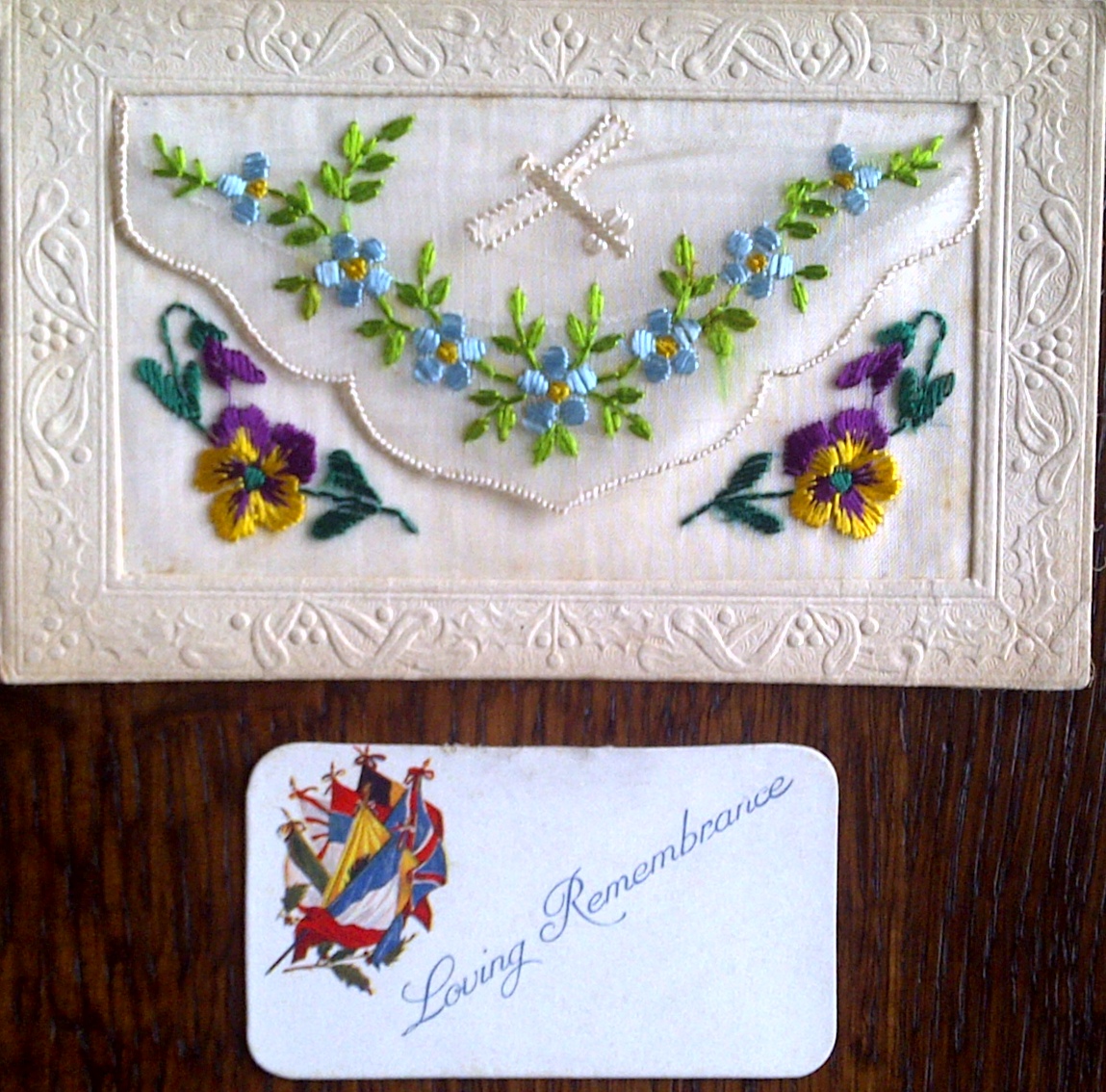
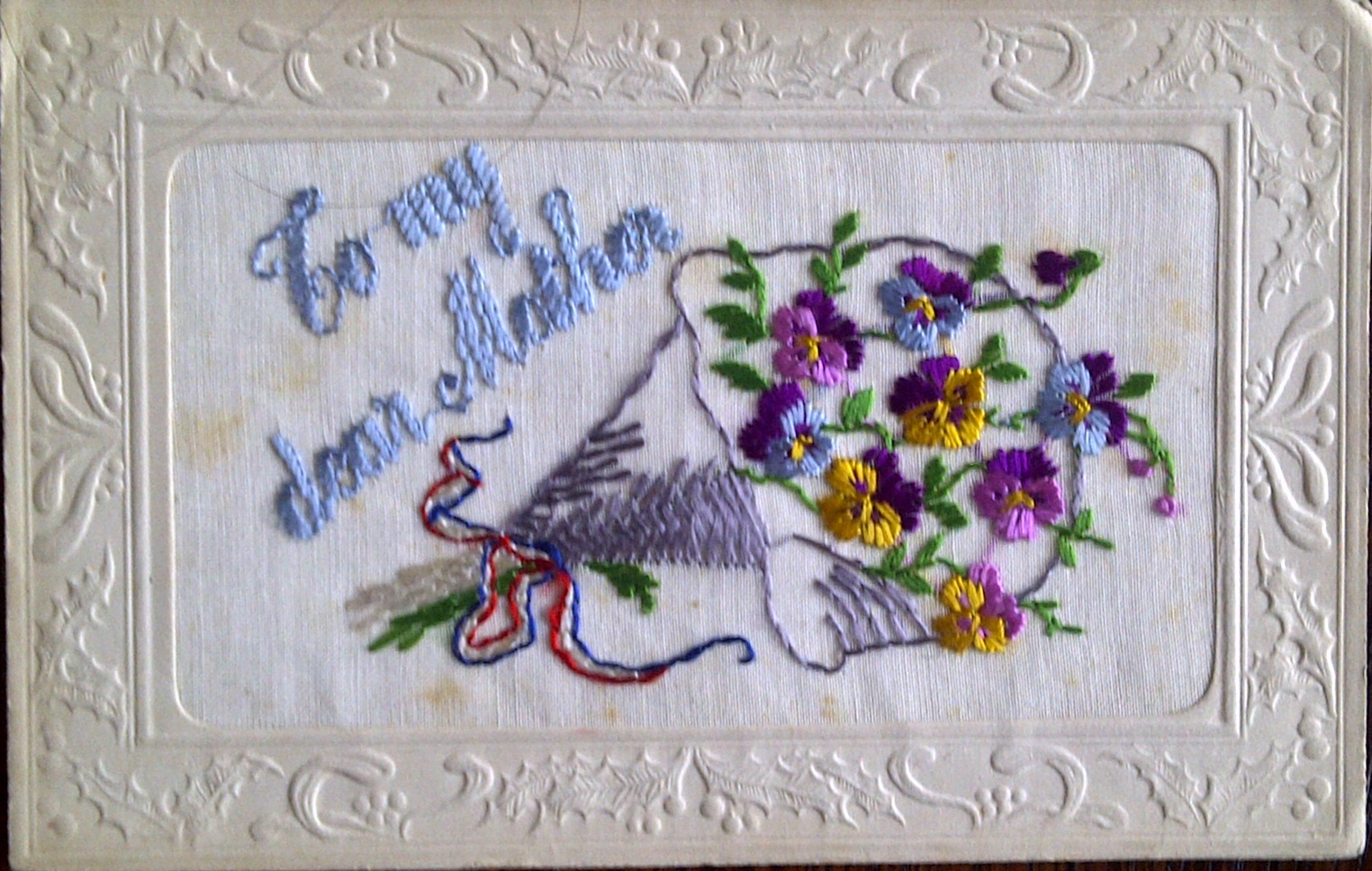
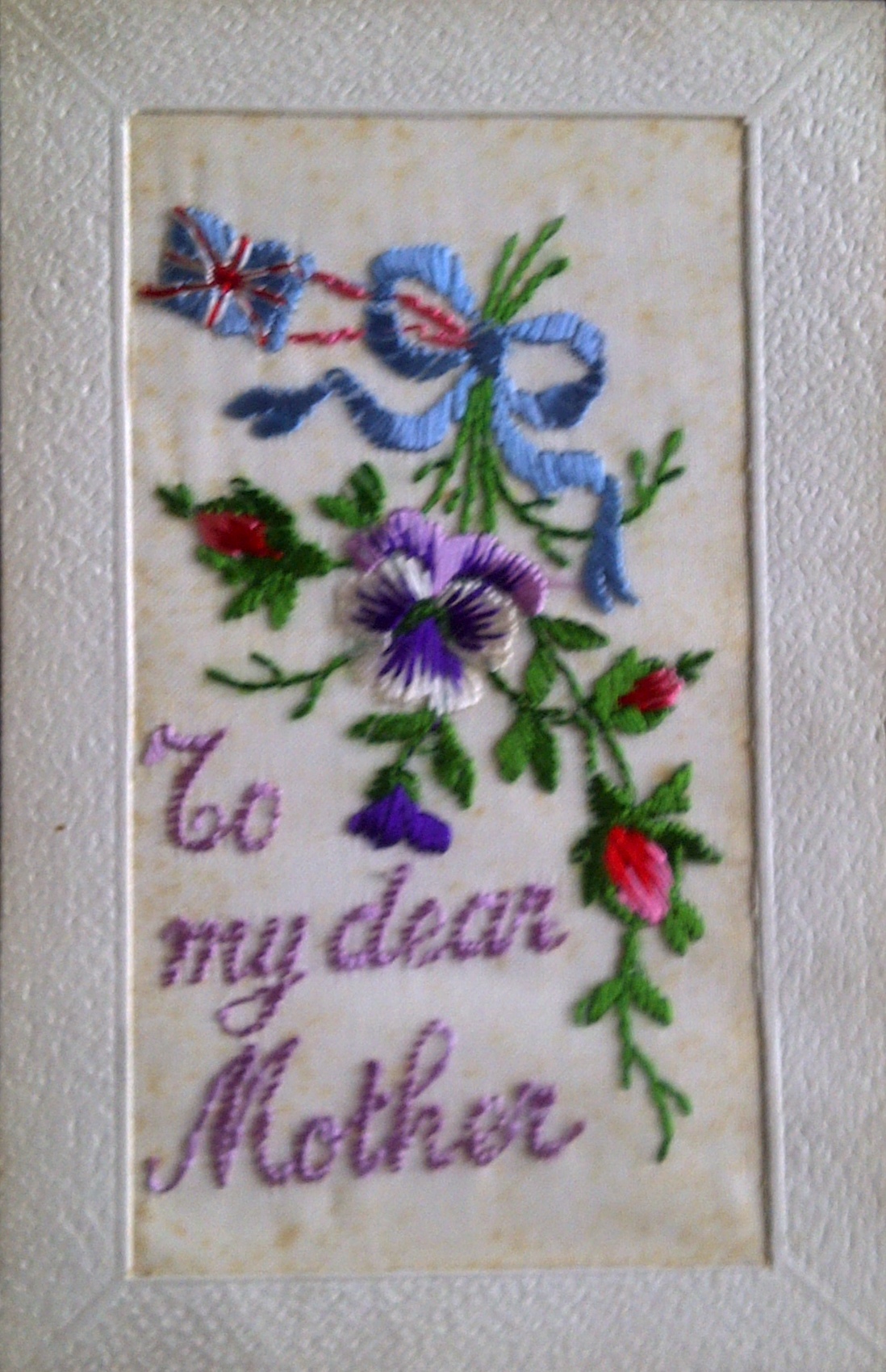 France, 12/7/16
France, 12/7/16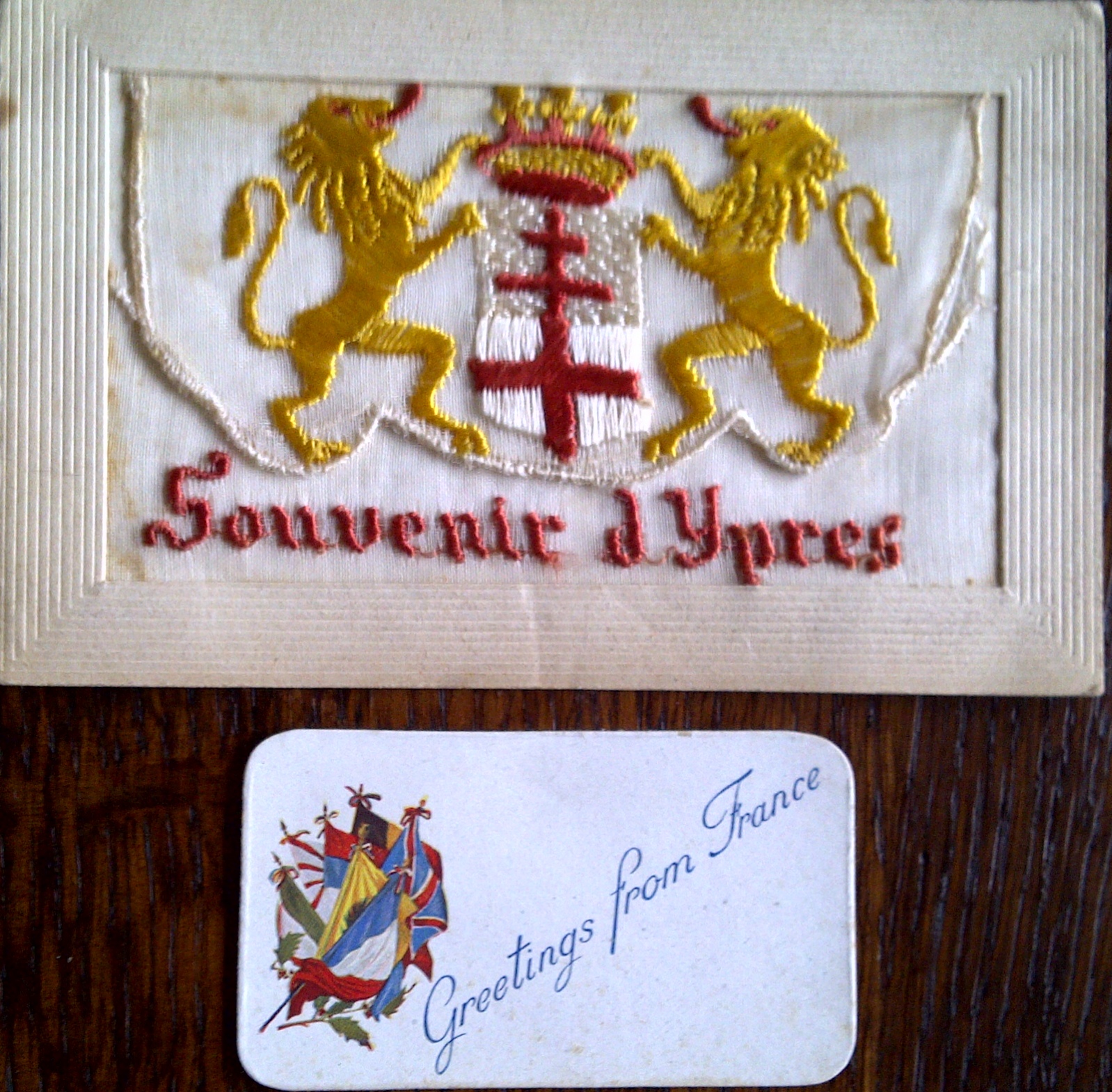 France, 21/7/16
France, 21/7/16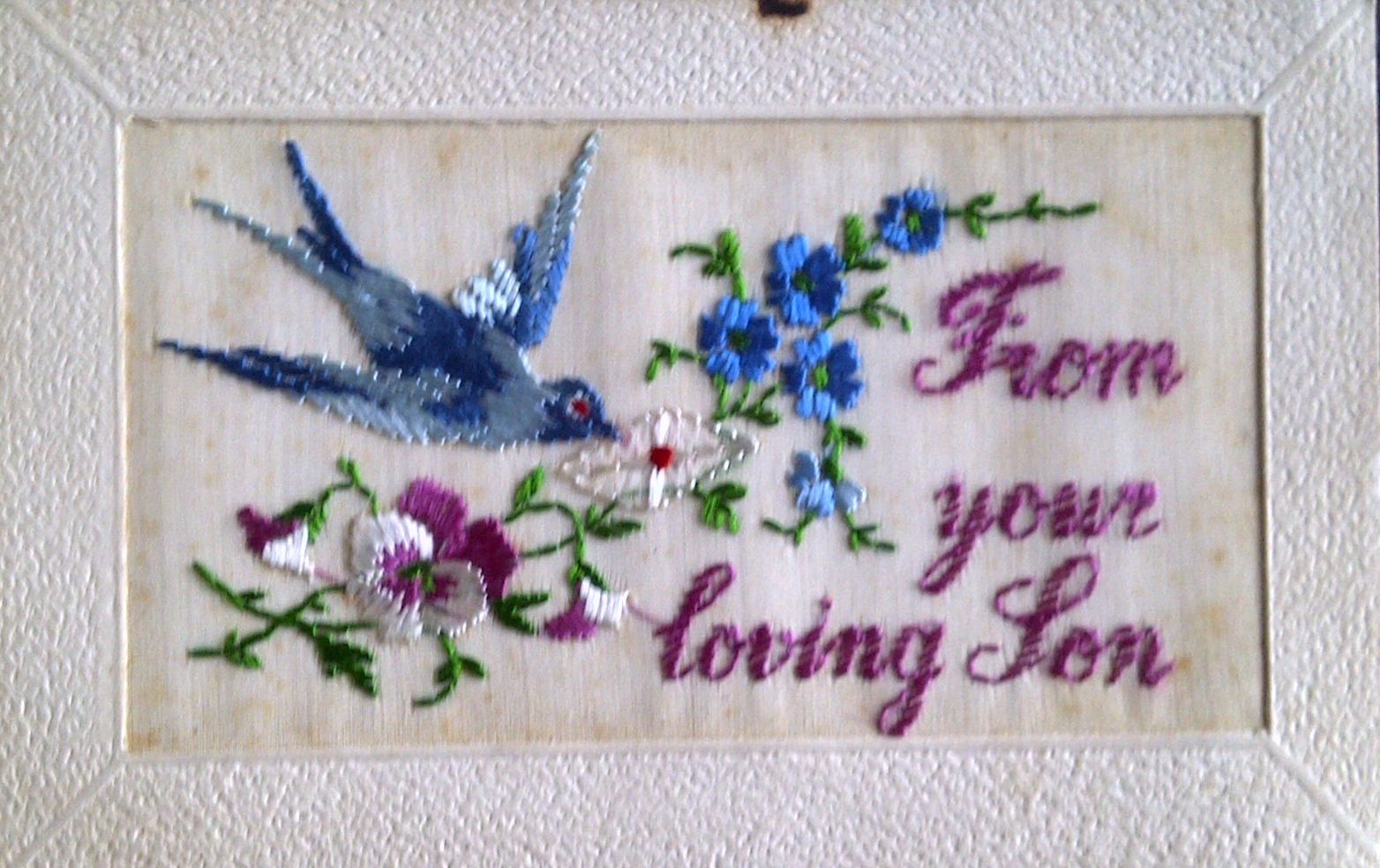 France, 23/7/16
France, 23/7/16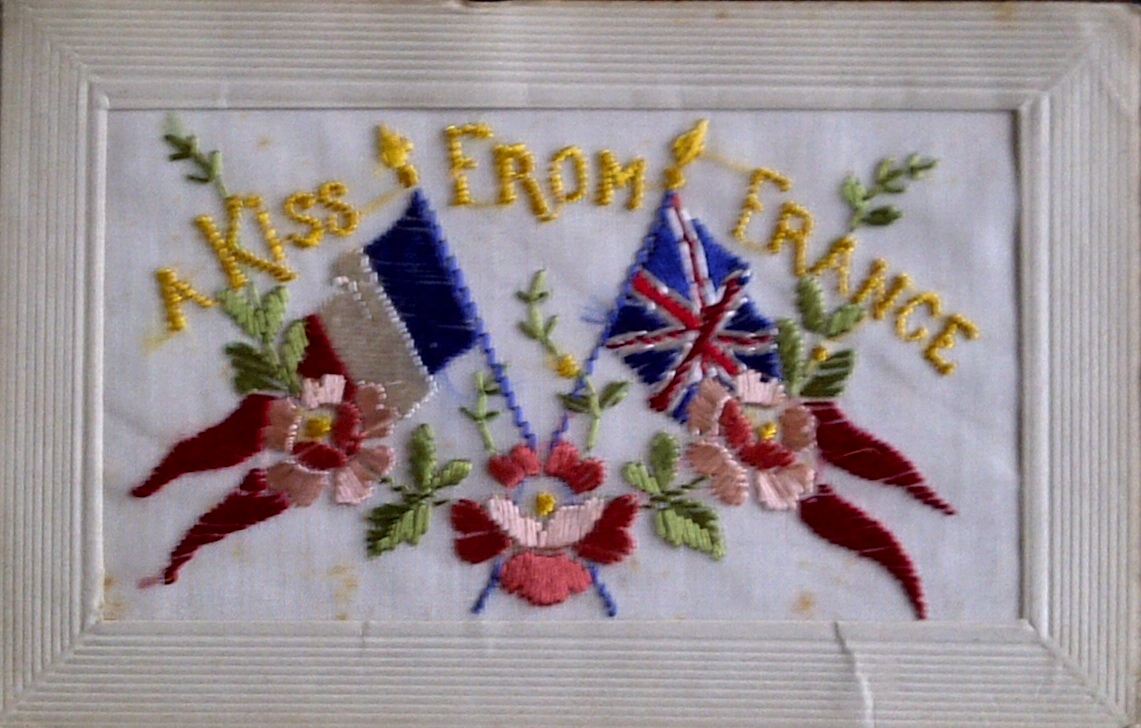 France, 5/8/16
France, 5/8/16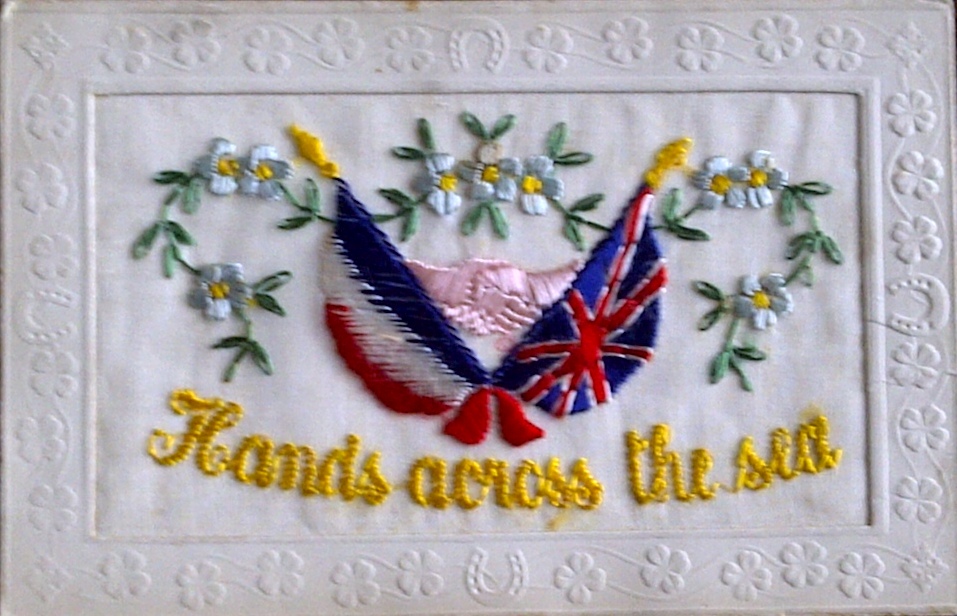 France 10/8/16
France 10/8/16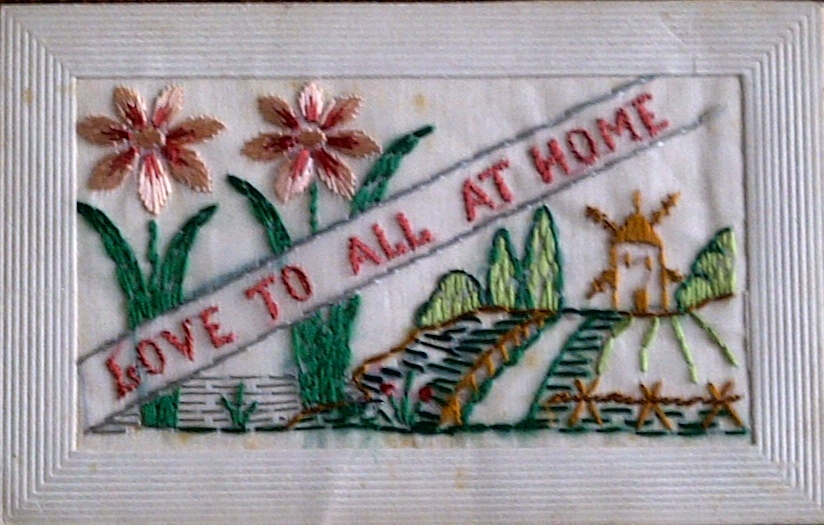 France, 3/11/16
France, 3/11/16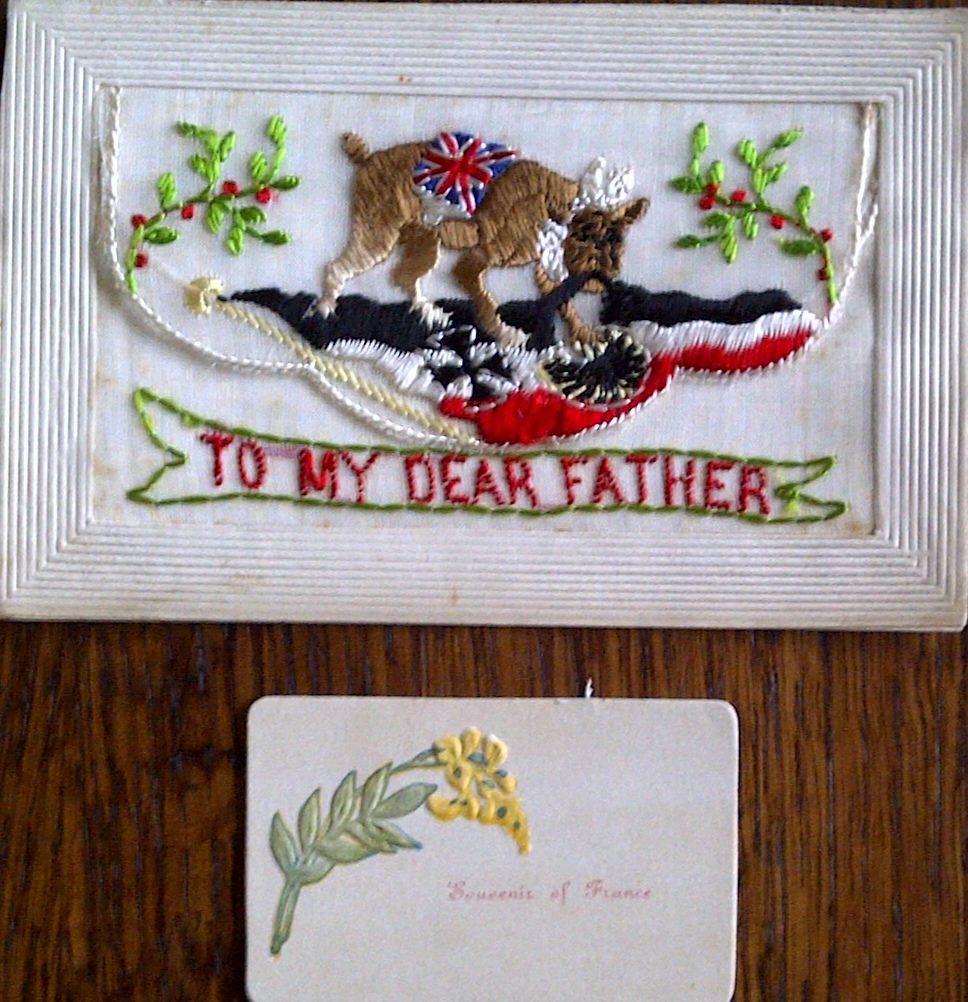 France, 4/11/16
France, 4/11/16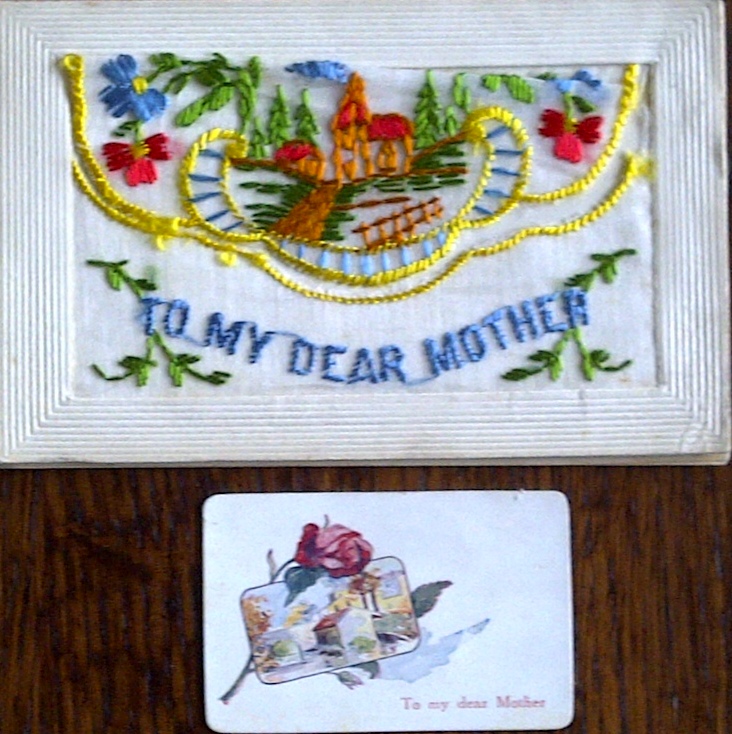 France, 6/11/16
France, 6/11/16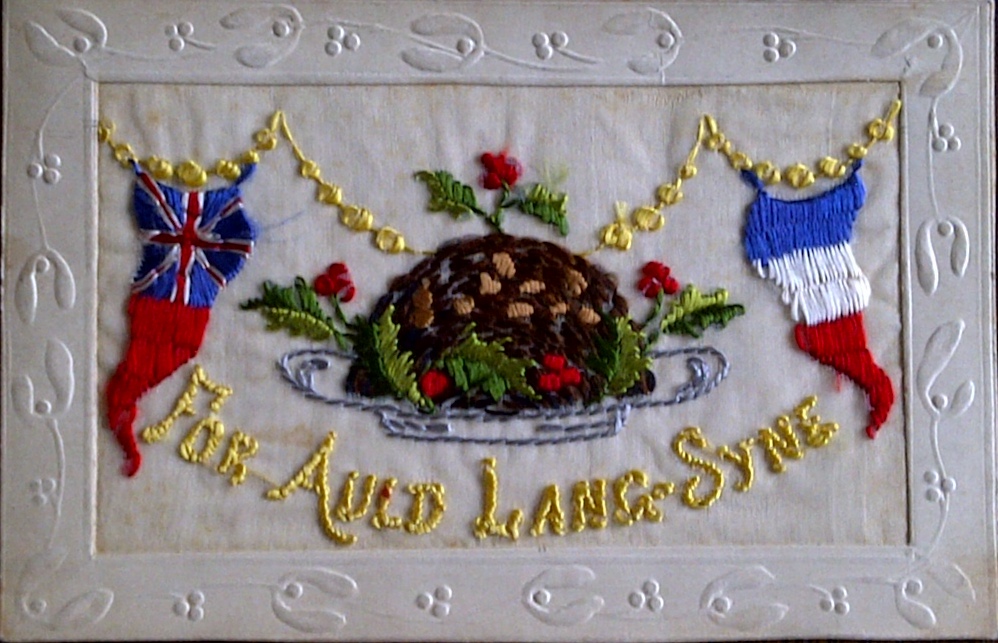 Hastings, 22/12/16
Hastings, 22/12/16